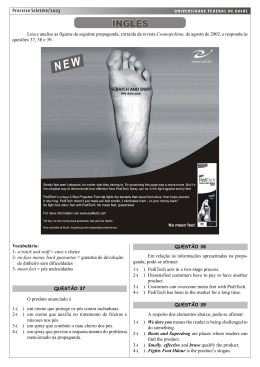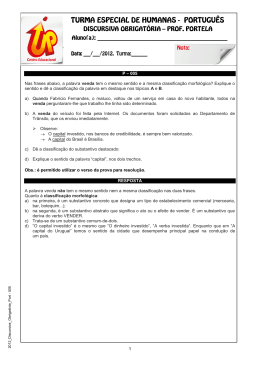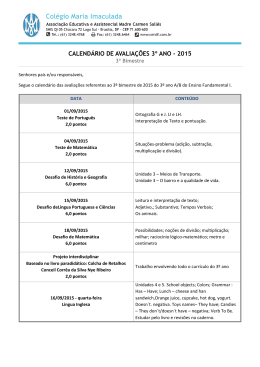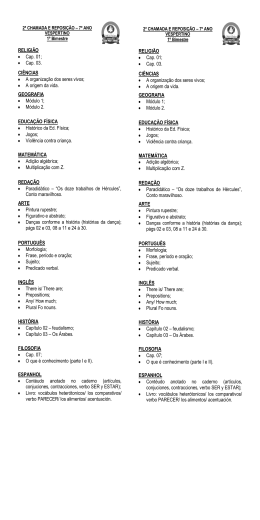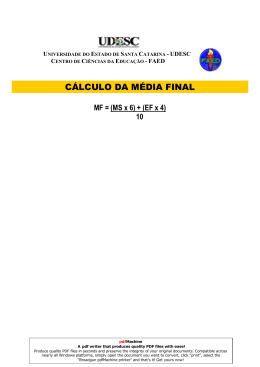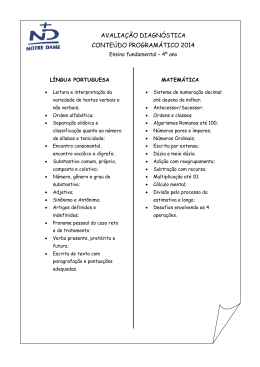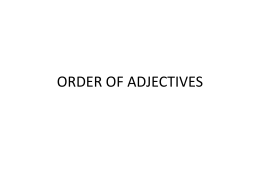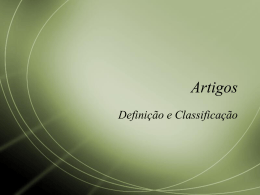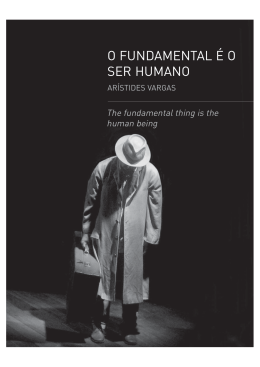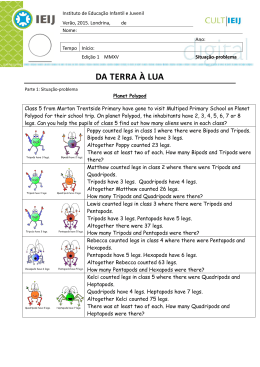Exercises on: o o Subject and Verb Agreement Plural Nouns Finish the sentences with the singular or plural form of the nouns: 1) The cat is sitting on my ____________ (bed/beds). 2) There are five ______________ (pencil/pencils) on my desk. 3) I have two ___________ (sister/sisters). 4) These are their ___________ (bike/bikes). 5) We have a ______________ (dog/dogs). 6) How many ____________ (book/books) do you have in your bag? 7) My mother has a new __________________ (computer/computers). 8) There are too many chairs in these ________________ (room/rooms). 9) Susan has no _______________ (poster/posters) in her bedroom. 10) There is a ________________ (pen/pens) on the floor. Concordância entre sujeito e verbo Se o sujeito da sentença for singular, o verbo que o segue também será singular. Se o sujeito for plural o mesmo ocorre com o verbo. Isto é, o verbo concorda com o sujeito. Laura lives in Berlin. They live in America. Muitas vezes, no entanto, o sujeito da oração é complexo (ou composto). Nesse caso, o verbo concorda com o substantivo principal do sujeito: Many pretty girls in town have boyfriends. Se o sujeito for uma oração, geralmente o verbo fica no singular. Anyone who goes to school nowadays needs to know how to use a computer. Having so many responsibilities is hard. Quando nomes e títulos terminados em –S referem-se a uma única unidade usa-se a forma singular do verbo. Isso inclui exemplos de países (the Netherlands), títulos de livros, filmes, etc. Mr. and Mrs. Smith is a funny movie! Wales isn't a big country. COMPOUND NOUNS (noun + noun) São dois substantivos juntos (às vezes escritos como uma única palavra), na qual a segunda palavra é o substantivo verdadeiro e o primeiro é usado como um adjetivo descritivo (nunca no plural). Observe que a segunda palavra é a mais importante das duas; a outra simplesmente descreve o tipo do substantivo seguinte. Por exemplo: a race horse - um cavalo de corrida a horse race - uma corrida de cavalos a tennis table - uma mesa de tênis table tennis - tênis de mesa Fill in the blanks with the compound nouns that correspond to the definitions: 1. A cup used for tea .......................... 2. A factory that makes cars .......................... 3. A fall of water ........................... 4. A store that sells shoes .......................... 5. Juice that comes from oranges ........................... 6. A stove which uses gas as fuel source .............................. 7. A room in which you can take a bath ................. 8. A house made of stones ................................ Vestibular UFRGS 2011 1. Consider the segment The train engines belch smoke (l. 04). Which alternative below presents the same sentence structure? (A) (B) (C) (D) (E) I carried out my promise. The coach is at the end of the train. I kept my mouth shut. I tipped him a further two rupees. He was a rather strong man 2. Observe the segments below. A-[...].various stages of rest and slumber (l. 10-11) B-[...].pure Himalayan mineral water (l. 14-15) C-[...].the regiments of red-uniformed porters (l. 20-21) The main words of the segments are, respectively, (A) (B) (C) (D) (E) stages – Himalayan – porters. rest and slumber – mineral – regiments. rest and slumber – mineral – porters. stages – water – regiments. various – water – red-uniformed. 3. Which of the phrases below present the same structure as rock musicians (l. 09) and hunger pangs (l. 11)? (A) (B) (C) (D) (E) clear ending. benign memories. immediate aftermath. baby boomers. crass impulses. Respostas: Finish the sentences with the singular or plural form of the nouns: 1) The cat is sitting on my bed. 2) There are five pencils on my desk. 3) I have two sisters. 4) These are their bikes. 5) We have a dog. 6) How many books do you have in your bag? 7) My mother has a new computer. 8) There are too many chairs in these rooms. 9) Susan has no posters in her bedroom. 10) There is a pen on the floor. Fill in the blanks with the compound nouns that correspond to the definitions: 1. A cup used for tea teacup 2. A factory that makes cars car factory 3. A fall of water waterfall 4. A store that sells shoes shoe store 5. Juice that comes from oranges orange juice 6. A stove which uses gas as fuel source gas stove 7. A room in which you can take a bath bathroom 8. A house made of stones stone house Vestibular UFRGS 2011 1. Resposta Certa: (A) Questão de gramática. O exemplo dado no enunciado apresenta sujeito (The train engines), predicado (belch) e objeto direto (smoke). A alternativa (A) é a única que segue esta ordem: sujeito (I), predicado (carried out) e objeto direto (my promise). As demais alternativas não apresentam essa estrutura. 2. Resposta Certa: (D) Questão de gramática onde o candidato precisa identificar, nos segmentos retirados do texto, o substantivo que constitui seu núcleo. Os núcleos são, respectivamente, stages, water e regiments, de modo que é a alternativa (D) a resposta correta. 3. Resposta Certa: (D) Questão de gramática que requer conhecimento sobre a estruturação de grupos nominais. Os grupos nominais rock musicians (l. 09) e hunger pangs (l. 11) são formados com a combinação de substantivo + substantivo. A única alternativa que segue o mesmo padrão é (D), baby boomers. As outras alternativas apresentam a combinação adjetivo + substantivo.
Download

